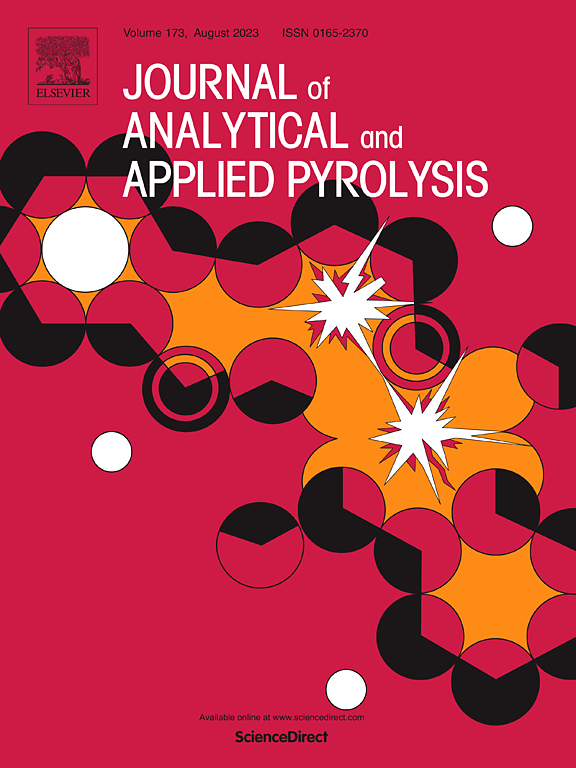Volatile species and polycyclic aromatic hydrocarbons upon thermal (oxidative) decomposition of lignocellulosic biomass: The insightful case of reconstituted cast-leaf tobacco
IF 5.8
2区 化学
Q1 CHEMISTRY, ANALYTICAL
引用次数: 0
Abstract
Thermal decomposition of a reconstituted cast-leaf tobacco used in heated tobacco products (HTP) was investigated at heating rates of 5–100 °C/min both in inert and oxidative atmospheres, up to 550 °C. Experiments were carried out in a thermogravimetric apparatus, to obtain a global apparent kinetic model, and in a fixed-bed reactor, for sampling of the emitted decomposition products at a wide range of heating rates. An array of diagnostics was used to analyze liquid and gaseous products.
Under the experimental conditions tested, oxygen did not induce combustion of fixed carbon until 400 °C, but did affect the rate of formation and chemical composition of condensable and gaseous products. The most remarkable effect of oxygen was to favour the formation of small hydrocarbons, such as methane and unsaturated species, particularly acetylene. Above 400 °C acetylene was shown to decrease when enhancing the growth of polycyclic aromatic hydrocarbons (PAHs) with up to six aromatic rings.
The kinetic model obtained from fitting of thermogravimetric curves accounted for the existence within the sample of six components, which could be traced back to the main components and ingredients of reconstituted cast-leaf tobacco. Even though the model provided only a global simplified description of thermal degradation in terms of mass loss, neglecting both the interactions among solid components and the complex cracking and recombination reactions within the volatiles, it served as basis for the discussion of the results of the reactor experiments and to extend them further to heating rates relevant for HTP operating conditions.
Results indicate that for temperature conditions relevant for HTPs, glycerol release and hemicellulose decomposition can occur in parallel and could in principle favour acetylene formation, even if it has not been reported in HTP aerosols in the literature. Nevertheless, the temperature in HTPs is typically kept below 350 °C, which ensures that combustion of the tobacco does not occur, limits the onset of lignin thermal degradation, and prevents the formation and growth of PAHs and subsequent formation of soot from happening.
求助全文
约1分钟内获得全文
求助全文
来源期刊
CiteScore
9.10
自引率
11.70%
发文量
340
审稿时长
44 days
期刊介绍:
The Journal of Analytical and Applied Pyrolysis (JAAP) is devoted to the publication of papers dealing with innovative applications of pyrolysis processes, the characterization of products related to pyrolysis reactions, and investigations of reaction mechanism. To be considered by JAAP, a manuscript should present significant progress in these topics. The novelty must be satisfactorily argued in the cover letter. A manuscript with a cover letter to the editor not addressing the novelty is likely to be rejected without review.

 求助内容:
求助内容: 应助结果提醒方式:
应助结果提醒方式:


